How often do we put the words math and love in the same sentence? Check out some of these authentic math experiences to discover learning your children will love. And maybe you will, too!
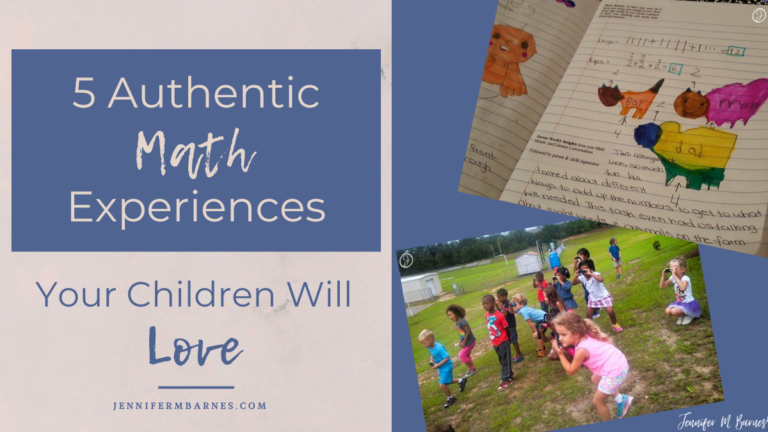
Twenty-five years ago, my daughter’s kindergarten teacher invited families to drop their leftover live Christmas trees beside their portable classroom in January. She strung those trees to the railings. And before we knew it, a bevy of backyard birds moved in, built nests, and raised their young. When walking across our campus, everyone paused to breathe in that little forest.
Inside her classroom, Dori’s students helped push their dramatic play area next to the windows.
- They exchanged their typical homeliving area items for a birdwatching station.
- Binoculars, field guides, and sketching supplies invited young ornithologists to identify birds and observe their daily habits.
- A math station with clipboards and graph papers became a popular place to track and tally birds.
- And when those baby birds hatched, the children delighted in their world.
There’s nothing like discovering a beautiful world you never knew existed. It’s surprising how often you can incorporate math experiences in insightful—and even easy—ways. Whether you have children or grandchildren or whether you teach them, I hope this list of authentic math experiences will bring a vibrancy to your world, too.
Just a note: One thing I’ve discovered about this generation of children is many of them desire to get things right—and do so quickly. With ease of access for practically everything in our world (from Googling answers to fast-food dinners), we are all used to an instant solution. Most of us don’t really appreciate spending time over a challenging problem. All too often, I’ve noticed little ones simply give up. Sometimes, within seconds—after one attempt! Hopefully integrating some of these experiences will help your children develop stamina and perseverance in math and all of life’s problems to come.
Kidwatching to Discover Math Naturally in the World
From observing birds to watching kids, we learn much. At lunch one day, I caught a child sorting her M&M’s into colors. I snapped some pictures. Later, I shared the photos on the white screen. Everyone giggled. But then we spent several minutes of “quiet thinking time” to each decide what our classmate must have been doing.
That quiet thinking time is essential for many kids to have time to figure out what they are seeing—and then craft their ideas into words. Don’t you remember those kids in school who figured out the problem instantly and immediately shot their hand up? Or worse, hollered out the answer? At that point, kids like me thought, “What’s the point in trying to figure it out for myself?” Making time to think makes all the difference.
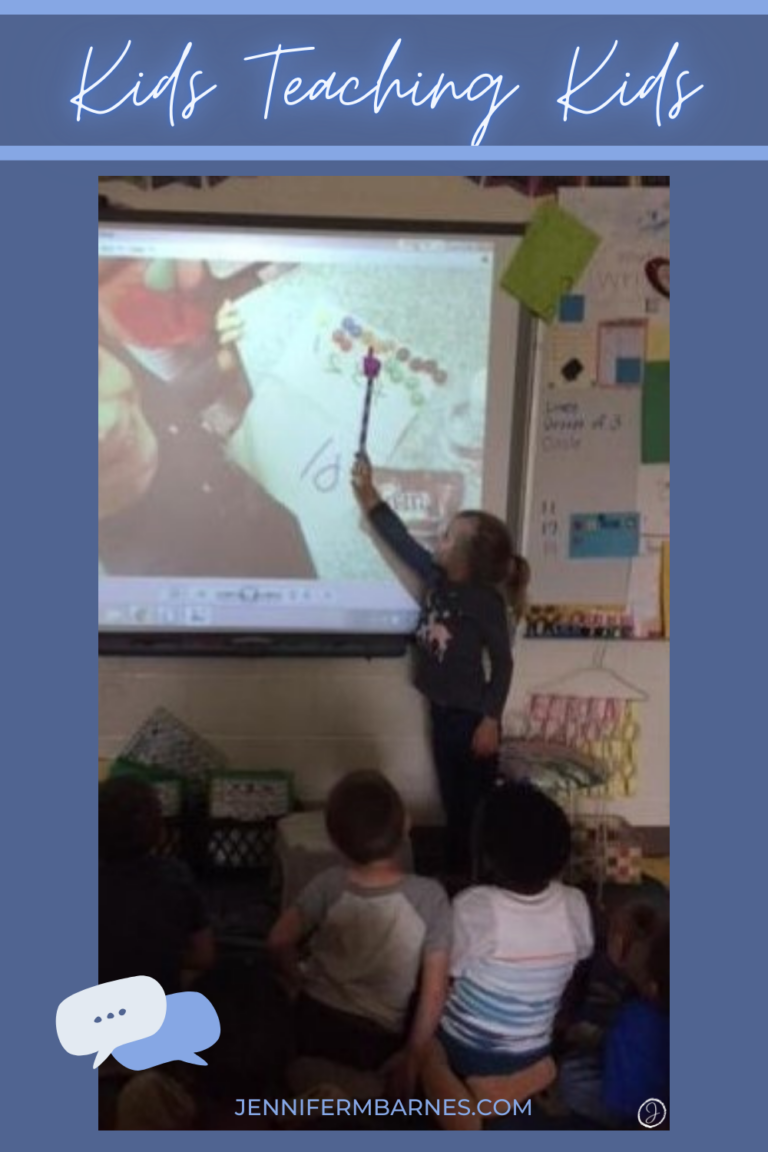
Our young mathematician called on several kids to give their thoughts about what she was doing. Even though children sometimes have the same ideas, they often use different ways of explaining them. It’s amazing to hear how a child’s conversation in math might be the most concrete catalyst to others’ understanding the concept.
After hearing several children’s thoughts, this student got the “last word.” She explained to her friends her thoughts about the M&M’s and why she ordered them the way she did. The children all clapped and cheered about the fun explanation. And throughout the week, other children were inspired to sort their own lunch foods in different ways as well.
Using Math as a Tool for Learning
Most of our applause-worthy learning experiences came from the interests and passions of children. Whether kids shared their fishing lure collections (compare/contrast, counting, patterns) or discussed their soccer team’s record of wins or losses (greater than/less than), we realized math was everywhere!
While studying arctic animals, we read some engaging picture books about polar bears. How surprised we were to discover male polar bears were ten feet long. We pulled out our large-scale measuring tape to measure ten feet. We were awestruck to see ten feet was the same length as our large rug. Every time we talked about polar bears from then on, I saw little eyes glimpsing across the length of the carpet.
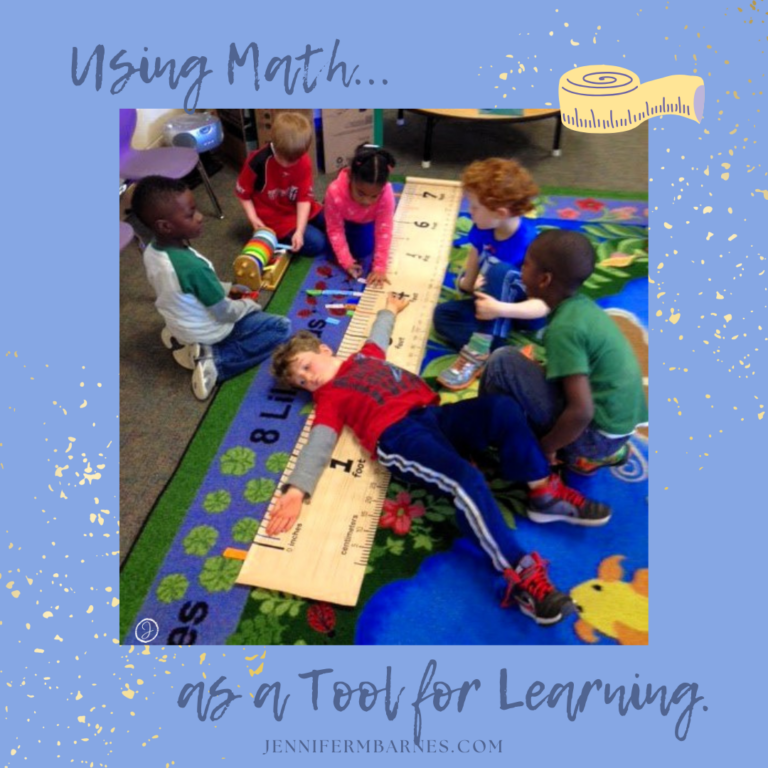
At different times, we measured the wingspan of eagles and the size of their nests as well as other animals. As the children lay across the measuring tape and imagined animals and their homes, they were amazed.
Recording Math in Learning Logs with Our Families
Being able to talk and reason about math concepts with measuring tools made our learning come alive. But being able to transfer that knowledge to paper and document our learning? That was huge!
To practice children’s “showing their math learning,” we used a regular part of our weekly home connections with families. Most people have used a variation of a reading log. But we also shared math problems in our learning logs. Each week, I’d print a new prompt on white labels and adhere them in the log, inviting children and families to solve them together.
Just take a look at the variety of strategies families used in solving problems in unique ways. This particular prompt was: “If 3 cats were on a farm, how many eyes would we see? How many legs would we see? Draw a picture to show your thinking and circle your numerical answer.”
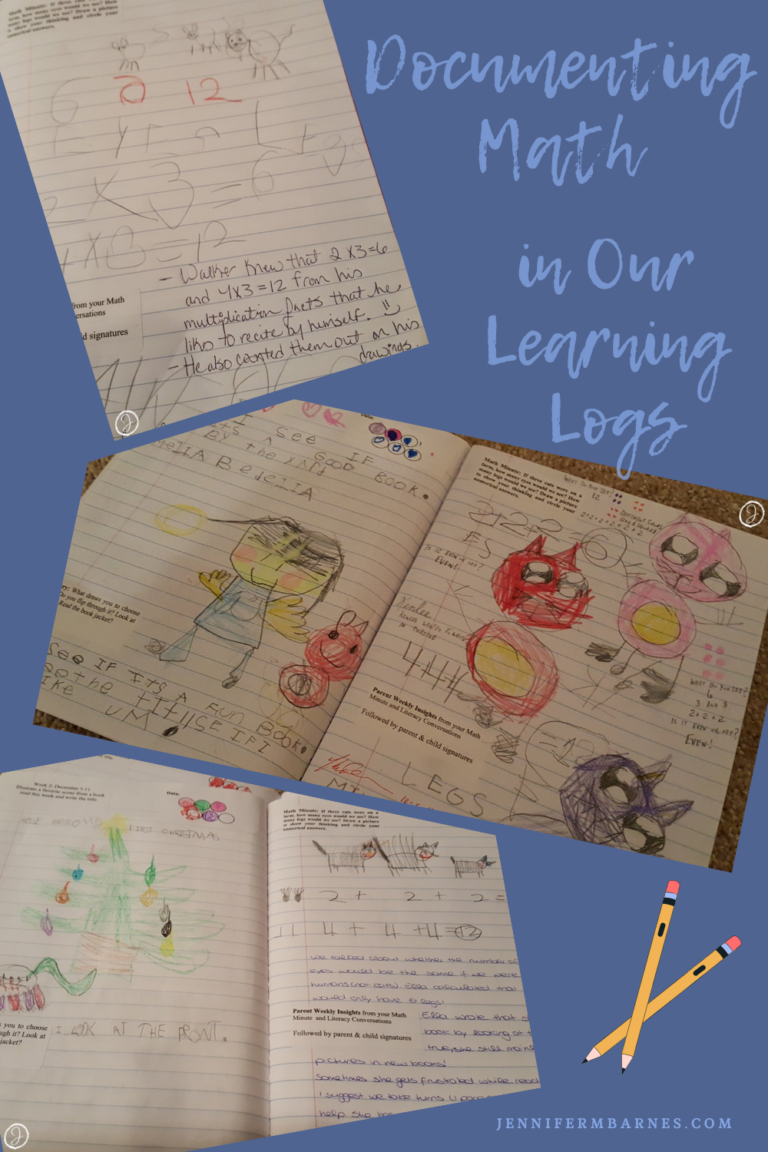
Remember our goal of perseverance and not giving up? Children worked with their families to:
- talk about possible strategies
- use stuffed animals to “act out” the solutions
- draw out the problem
- brainstorm other ways they could solve the problem.
After their experiences, the children documented their thoughts on paper. I also invited parents to share the process in their own words.
What a delight it was to receive those learning logs each week! I was blown away by the big ideas that kids and parents discussed. I learned quickly which children were struggling with how to form numerals accurately, who wanted to stop after one wrong answer, and a few who mentally understood the basics of multiplication. What vast concepts children and families worked through as they explored their ideas together!
Our families were a huge asset in truly assessing children’s knowledge and mastery of skills. I knew we all were a team who had the children’s understandings most at heart. Such math conversations broadened the children’s growing understanding of math concepts. (And I believe that the children whose parents interacted with them over math concepts regularly became much stronger mathematicians overall.)
Puzzling Around with Math Problems Together
When families consistently worked together in math, interesting conversations emerged for us all. And when we made time for children’s questions in math, they always surprised me. But how in the world do we explain answers to children’s questions?
My best advice:
- Listen to what children are really asking.
- Then, try to create concrete ways to solve the answers together.
- Ask open-ended questions.
Take this example. One question I often received was: “Why did January start on a Wednesday, but February 1st is on a Saturday?”
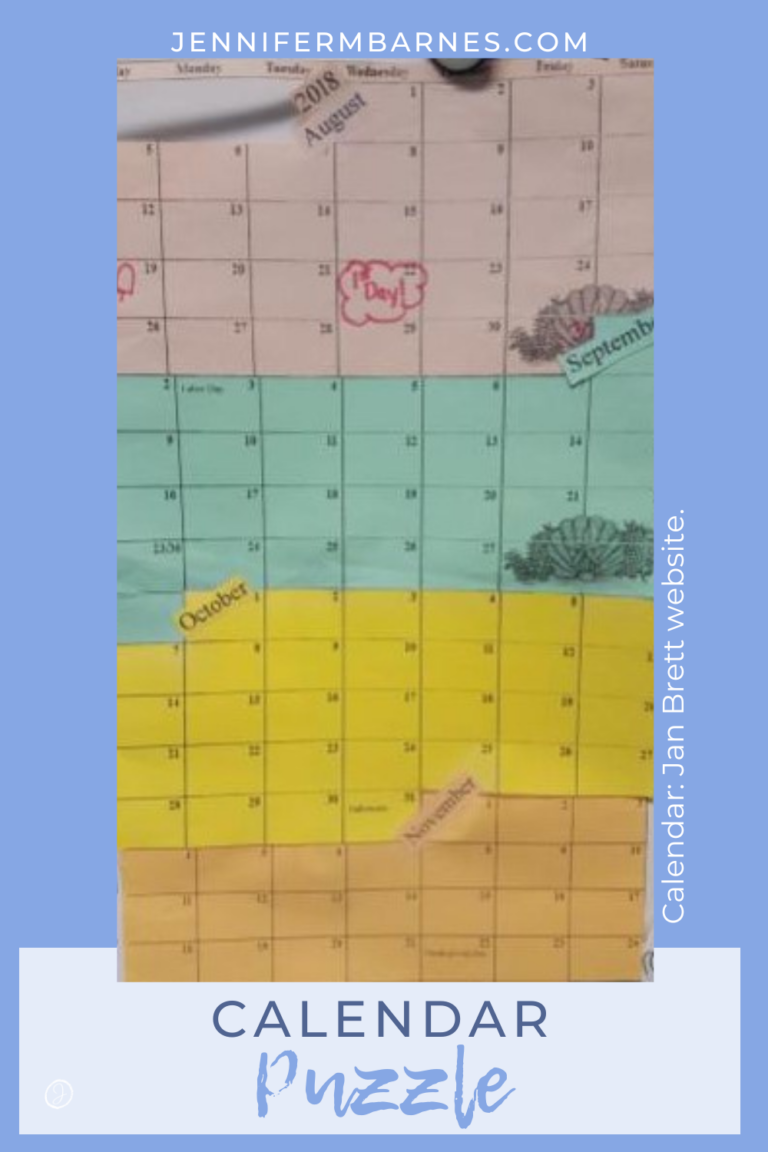
Following are detailed instructions I discovered to explain the varying days that different months start:
- Find an old calendar or locate one on the Internet. (Ours came from Author/Illustrator Jan Brett’s website.)
- Grab some scissors and invite your child to carefully cut around the day pieces only. (In this case, we cut out only the 31 squares from Wednesday, January 1st to Friday, January 31st. We deleted the others.)
- Then, show your child the month of February. (Consider printing it on a different color of paper. That way, it will be easier to see where one month ends and the next one starts.)
- Talk about where it starts—Saturday—and where it ends, Friday, the 28th. Invite your child to cut around those 28 days as well.
- Here’s the best part! Simply slide the February calendar to fit the January piece. Just like a puzzle! Tape them together. Move ahead into subsequent months, as desired.
- You might consider cutting out the days of the week and attach to the top as well as the month names.
Eventually, children begin seeing why months start on different days. They also notice that the pattern doesn’t start over with Sunday each time. The pattern just continues where the last month stopped. What makes this activity work so well is that it meets a real question that I’ve heard children ask for years.
Anytime you can connect concrete experiences with authentic questions of kids, you’ll find kids more invested in wanting to “do math.”
Participating in Real-World Citizen Science Projects (Like the Great American Bird Count)
Are you looking for other ways to “do math” for real? This past December 14th-January 5th was the 125th Audubon Christmas Bird Count for the National Audubon Society. Thousands of volunteers of varying ages helped tally and count birds for this census. Scientists use the data to critique trends in bird populations over the years. Such a citizen scientist project would have been perfect for young mathematicians and their families.
No fears if you missed it though. Excitingly, the Great Backyard Bird Count is coming up during the weekend of February 16th-19th. Families can participate as few as 15 minutes (or as long as you wish) during the four-day event. Even from their backyards! If you’re interested in engaging in a thoughtful and family-friendly math event, you just might want to join thousands of other volunteers, too. (Place it on that February calendar now so you don’t forget to observe and then submit your data to the website.)
Hopefully, you’ve discovered some helpful tips about engaging in math in powerful ways with your young children. Your conversations, questions, even the toys you buy, and the plans you make could mean a big difference in your child’s understanding of math.
If you’re still planning on your February calendar, you might want to mark the 14th. If you want to see how our class celebrated Valentine’s Day, promoted friendships and meaningful writing, check this post out.

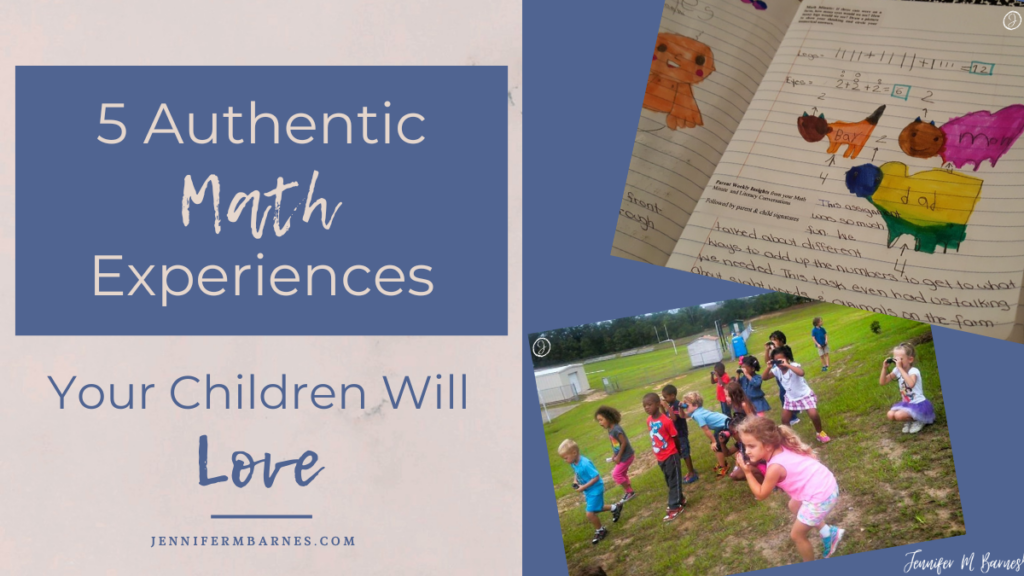
Sooo many great ideas! I love the way you provide creative opportunities for children to learn and then give them the space they need to explore. Excellent!
Thank you so much, my friend! Yes, time and space and open-ended experiences are amazing for little kids to thrive. Thanks so much for commenting!